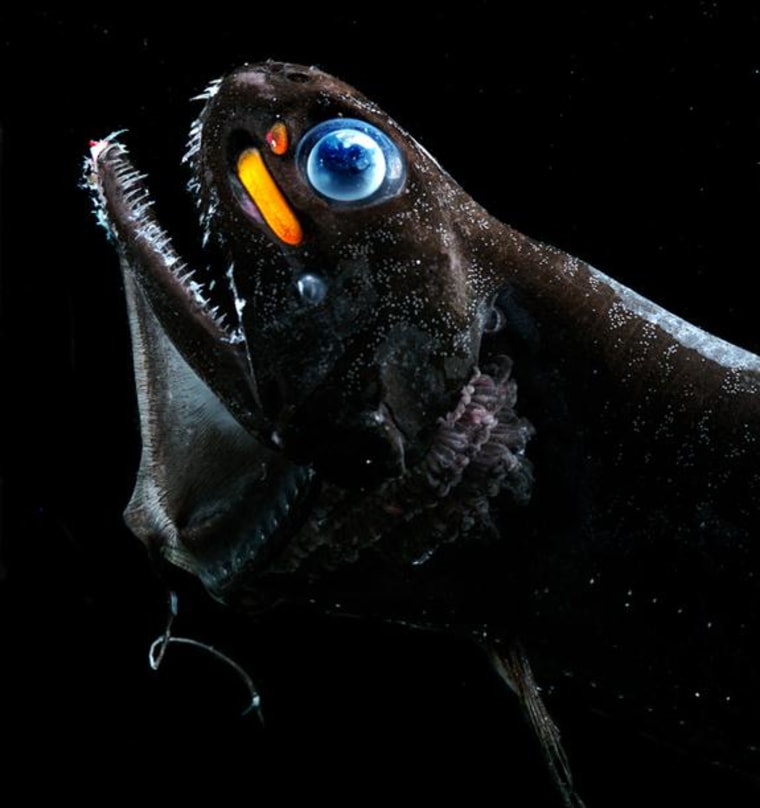Fearsome-looking creatures that live in the near-dark to pitch-black waters of the deep sea, dragon fish wouldn't seem to have much need for eyes, let alone the ability to see color. However, some dragon fish have rapidly evolved from blue-light sensitivity to red-light sensitivity, and then back to blue again.
The deep sea is not the sort of environment that would appear to encourage rapid evolution. "It doesn't change. It is always dark," said study researcher Christopher Kenaley, a comparative biologist at Harvard University. "There is something else down there that is driving the evolution of the visual system."
The force driving these changes is likely the bioluminescence produced by the dragon fish themselves as well as by other deep-sea creatures, he said.
Dragon fish, which have outsized jaws and teeth that belie their small size, live between about 650 to 6,600 feet (200 to 2,000 meters) beneath the ocean's surface. About 95 percent of animals in that region can see blue light, which the creatures also produce through bioluminescence. Deep-sea animals, including dragon fish, glow in order to lure prey, communicate with one another or camouflage themselves against the dim light from the surface. Some dragon fish sport lures known as barbels with glowing fibers that resemble blue fiber-optic lights. [A Glow in the Dark Gallery]
Although blue is the default shade of the deep sea, nine species of dragon fish appear to be able to see and bioluminesce in red.
The dragon fish that emit red bioluminescence seem to have tweaked the process used to produce blue light, and the evolution of this ability to produce red likely drove the evolution of the ability to see it. Meanwhile, those fish that regained the ability to see in blue may have done so in order to effectively find mates or lure blue-seeing prey, Kenaley said.
This study contradicts previous research that suggested the ability to see red light evolved at least twice independently. Meanwhile, other genetic research grouped blue- and red-seeing fish separately and found no evidence that a red-seeing ancestor reverted to blue.
The journal Evolution recently published a study describing this work online.
- Wynne Parry, Live Science Contributor
Follow us @livescience, Facebook & Google+. This is a version of a report that appeared on LiveScience. Read the original report.
- Gallery of Glowing Sea Creatures
- Image Gallery: Cats that Glow in the Dark
- Bioluminescence Quiz: Do You Know About Glow?
Copyright 2014 LiveScience, a TechMediaNetwork company. All rights reserved. This material may not be published, broadcast, rewritten or redistributed.
